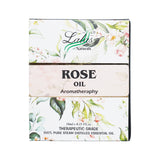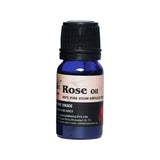In aroma therapy, breathing in the scent of rose oil has long been held to have anxiolytic (anxiety-reducing) and aphrodisiac benefits. When applied to the skin, rose oil may help relieve pain and inflammation while improving overall skin health. Rosa damascene (damask rose), Rosa centifolia (cabbage rose), and Rosa alba (the white rose of York) are the species most commonly used to source rose oil, as these have the strongest aroma and highest oil content. Aside from using rose oil for health purposes, it is also one of the most widely used essential oils in the manufacturing of perfumes and fragranced products. When mixing rose oil for topical application, choose a cold-pressed carrier oil as your base, as it is less acidic than a heat-extracted oil. The proportion of rose oil to carrier oil can vary based on how sensitive your skin, always start with a lower concentration. For a 1% dilution, simply mix 12 drops of rose essential oil to one fluid ounce (30 ml) of a cold-pressed carrier oil, lotion, or vegetable butter. For a 2% concentration, add 24 drops of essential oil to one ounce of your base.
Rose oil also can be inhaled by sprinkling a few drops onto a cloth or tissue or by using an aroma therapy diffuser or vaporizer. While you should never use a rose oil/carrier oil mix in one of these devices, you can do so when adding oil to bathwater. Should be stored in a cool, dry area away from direct sunlight and in their original, light-resistant bottles. You can also keep them stored in the refrigerator, though pure essential oils will generally have a very long shelf life.



